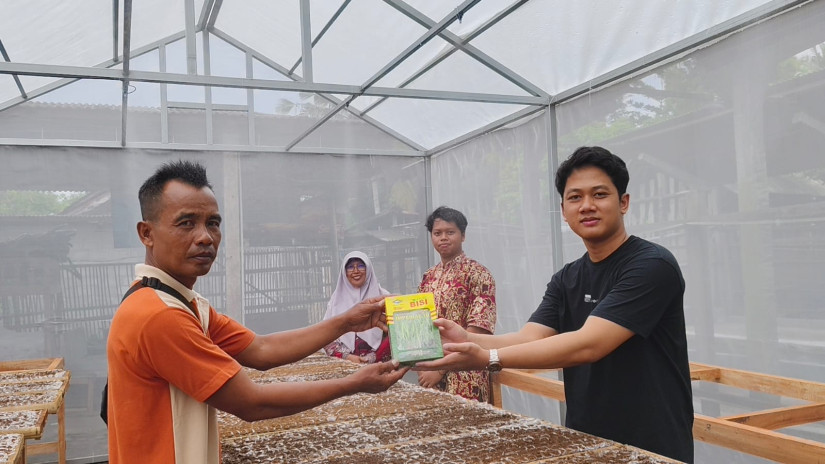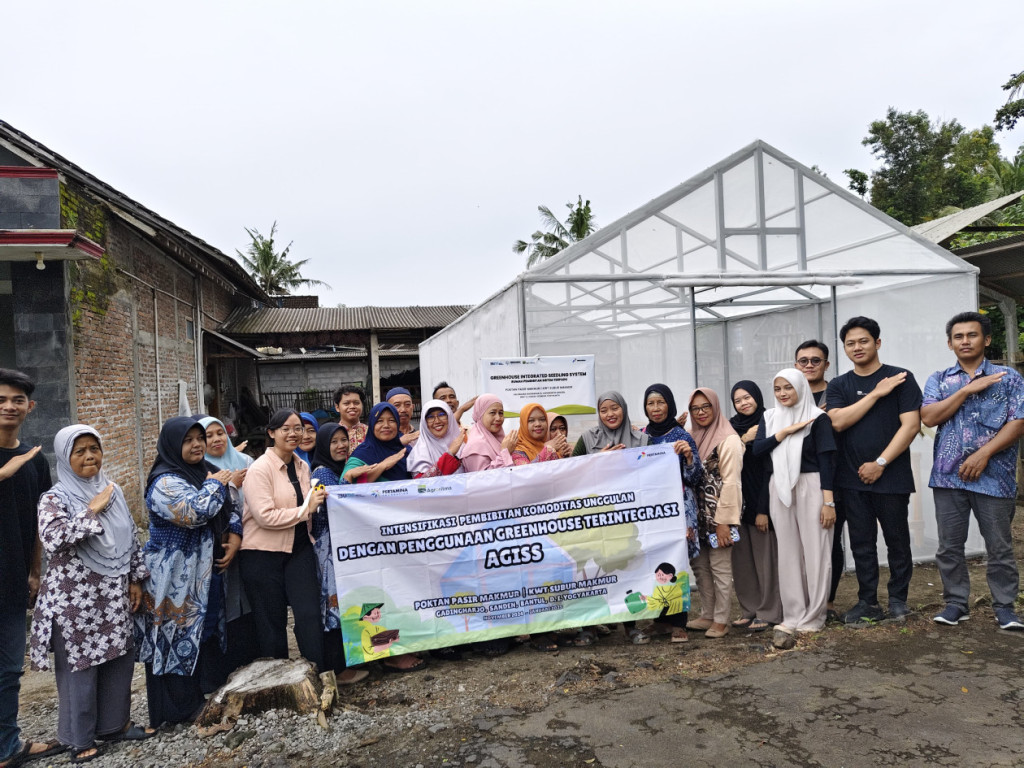
In collaboration with alumni from Universitas Gadjah Mada, who are part of the social enterprise Agroritma, several students inaugurated an integrated greenhouse innovation known as AGISS (Agroritma Greenhouse and Integrated Seedling System).
In addition, this student and alumni community also conducted technical training on seedlings in the coastal sandy farmland area of Karanganyar Hamlet, Sanden District, Bantul Regency, Special Region of Yogyakarta.
Chairina Indita, the AGISS project manager, also stated that the inauguration of the seedling house is an initial step to promote the independence of agricultural seedlings in coastal sandy lands.
“This seedling house can bring positive and sustainable changes for farmers in coastal sandy land areas, supporting seedling independence, enhancing productivity, and improving the welfare of farmers in the Sanden area,” Indita said in a statement sent to reporters on Wednesday (Jan. 29).
Indita explained that the Pertamina Foundation supported the inauguration of AGISS through the 2024 PFmuda Program as part of its efforts to support the development of integrated agriculture.
The seedling house’s construction took about one month. Its aim was to create a facility for intensifying seedlings for superior commodities.
“We hope this one-month process will create a more efficient seedling process,” she said.
Moreover, Agroritma is committed to continuing to collaborate with various parties to deliver other innovative solutions in the future.

Representatives from Agroritma, the Pasir Makmur Farmers Group, and the Subur Makmur Women’s Farmer Group symbolically inaugurated this agricultural commodity seedling house by signing an AGISS integrity pact.
Dwi, the coordinator of the Agricultural Extension Center in Sanden District, said that seedling houses have always been challenged by the heat from ultraviolet rays.
“This challenge has been addressed through AGISS, which has been equipped with a mist irrigation system to counteract the hot air that damages the seedlings. Hopefully, this will be beneficial and improve agricultural productivity in sandy land areas,” he said.
Author: Kezia Dwina Nathania
Editor: Gusti Grehenson
Post-editor: Afifudin Baliya

